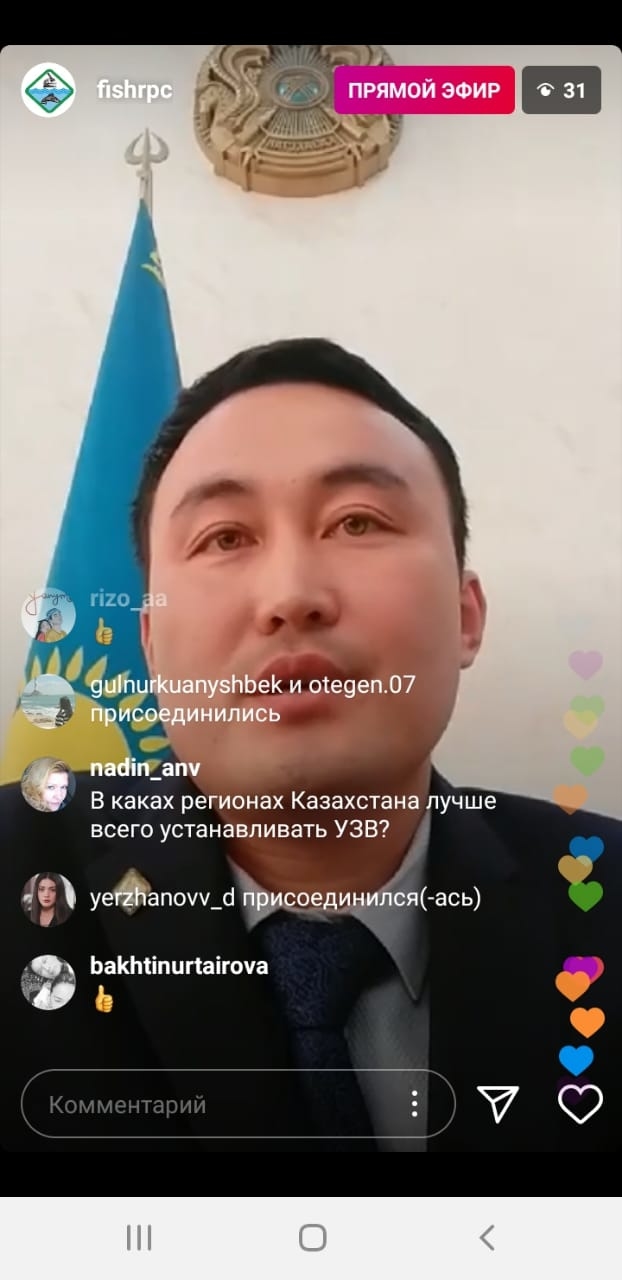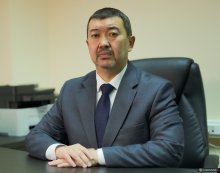
LLP «Fisheries Research and Production Center», which is subsidiary of the “National Agrarian Science and Educational Center” JSC, conducted an online consultation on the topic "Growing fish in closed water supply systems." The speaker was E.B. Marlenov, head of the laboratory of Ichthyology at LLP «Fisheries Research and Production Center».
The lecturer answered the most exciting questions of the audience, for example, such as what is the optimal fish landing density in the closed water supply (CWS), what kind of fish is most suitable for cultivation in CWS, in which regions of Kazakhstan it is best to install CWS, how beneficial it is to grow fish in the CWS, how to choose the capacity workshops for CWS and many other topics.
Aquaculture in closed water supply (CWS) plants is essentially a technology for raising fish or other aquatic organisms with the reuse of water for production purposes. This technology is based on the use of mechanical and biological filters and, in general, can be used to grow any aquaculture objects, for example, fish, shrimp, bivalves, etc.
CWSs are used in a wide range of production units: from huge industrial enterprises producing many tons of fish per year, to small specialized systems that are used to replenish stocks or to save endangered species.
Water recirculation can occur with different intensities. Some farms are super-intensive fish farming systems located in covered, isolated buildings and using only 200 liters of fresh water per 1 kilogram of fish produced, some systems use about 3 m3 of fresh water per 1 kilogram of fish produced.
For example, a traditional flow-through system for growing trout typically uses about 30 m3 of water 1 per kilogram of produced products.
From an environmental point of view, the smaller amount of water used in the ultrasonic testing is undoubtedly favorable, since in many regions water has become a limited resource. Due to lower water consumption, the removal of fish waste products also becomes easier and cheaper, since the volume of discharged water is much less in traditional fisheries.
Therefore, aquaculture in CWS can be considered the most environmentally friendly method of fish production at a commercially viable level. Also most interesting is that the economical use of water also offers great advantages in terms of fishery products. Traditional fish farming is completely dependent on external conditions, such as temperature in the pond, purity of water, oxygen levels, the influence of weed fish, the presence of a plant, etc. And in the ultrasonic inspection these external factors are eliminated either completely or partially, depending on the design of the installation.
One of the advantages of recycling is full control over all production processes and parameters. Control of parameters such as water temperature, oxygen levels or even the level of illumination provides stable and optimal conditions for fish, which, in turn, leads to less stress and better growth. The result of such stable conditions is constant and predictable growth, allowing the farmer to accurately predict when the fish will reach the desired weight and readiness for sale. This has a beneficial effect on the overall management of the farm and improves the ability of fish farmers to competitively sell fish.
One of the most important of these benefits is the aspect of disease. In CWS, the impact of pathogens is significantly reduced, since the ingress of invasive diseases into the ultrasound from the environment is minimized due to the limited use of water. Under normal conditions, water for fish farming is taken from a river, lake or sea, which increases the risk of introducing diseases. In CWS, due to limited water consumption, water is usually taken from a well, drainage system or key, where the risk of disease is minimal.
Just as we all know, a fish gets sick from eating food infected with helminthes larvae. In CWS, feeding is carried out by extruded compound feeds, which means that invasion is excluded. In fact, in many CWS there are no problems with diseases at all, therefore the use of medicines is significantly reduced, which has a beneficial effect on both production and the environment.
Aquaculture is not for everyone. It requires knowledge, the proper use of resources, perseverance and, sometimes, nerves of steel. The transition from traditional fish farming to ultrasonic treatment facilitates many processes, however, at the same time, it requires new and greater skills.


